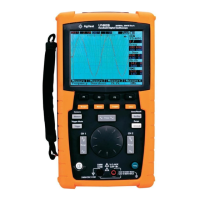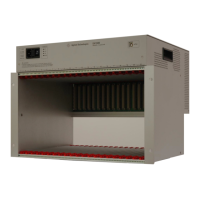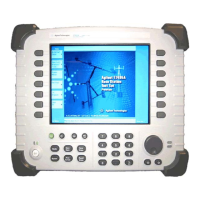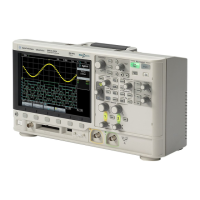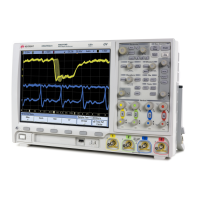Figures
l-l. Typical Maximm Available Output Power from 1 to 20
GHz,
at 25°C with
Output Step Attenuator (Option
1El)
Installed
. . . . . . . . . . . . . .
l-2. Typical Output Level Accuracy and Flatness at + 10 and -85
dBm
. . . . . .
l-3. Typical single-sideband phase noise at 1
GHz,
10
GHz
and 20
GHz,
25OC,
CW
mode. Offsets less than 100 Bz require the high stability timebase, Option
lE5...................................
l-4. Typical 2nd Harmonic Levels Measured at Output Power of +6
dBm
. . . . .
l-5. Typical Residual FM Measured in 50 Hz
-
15
kHz
Bandwidth, CW Mode, with
High Stability
Timebase
(Option
lE5)
. . . . . . . . . . . . . . . . . .
l-6. Typical Maximum Available Output Power from 1 to 20
GHz,
at
25OC
with
Output Step Attenuator (Option
1El)
Installed
. . . . . . . . . . . . . .
l-7. Typical Maximm Available Output Power from 0.01 to 1
GHz
at
25OC
. . . .
1-8. Typical Output Level Accuracy
andFlatness
at
+lO
and -85
dBm
. . . . . .
l-9. Typical single-sideband phase noise at 50 MHz, 1
GHz,
10
GI-Iz
and 20
GHz,
25OC,
CW mode. Offsets less than 100 Hz require the high stability timebase, Option
lE5...................................
l-10. Typical 2nd Harmonic Levels Measured at Output Power of +6
dBm
. . . . .
l-l 1. Typical Residual PM Measured in 50 Hz-15
kHz
Bandwidth, CW Mode, with
Hi Stability
Timebase
(Option
lE5)
. . . . . . . . . . . . . . . . . .
1-12. Typical Maximum Available Output Power from 1 to 20
GHz,
at
25OC
with
Output Step Attenuator (Option
1El)
Installed.
. . . . . . . . . . . . . .
1-13. Typical Maximum Available Output Power from 0.01 to 1
GHz
at
25OC
. . . .
1-14. Typical Output Level Accuracy and Flatness at + 10 and -85
dBm
. . . . . .
1-15. Typical single-sideband phase noise at 50 MHz, 1
GHz
and 20
GHz,
25OC,
CW
mode. Offsets less than 100 Hz require the high stability
timebase,
Option
lE5...................................
1-16. Typical 2nd Harmonic Levels Measured at Output Power of
+6
dBm
. . . . .
1-17. Typical Residual PM Measured in 50 Hz-15
kHz
Bandwidth, CW Mode, with
High Stability
Timebase
(Option
lE5)
. . . . . . . . . . . . . . . . . .
1-18. Typical Pulse Modulation
On/Off
Ratio at
+8
dBm
. . . . . . . . . . . . . .
1-19. Typical
Pulse
Modulation Envelope
IIIustrates
the Past Rise and
FUI
Times,
Excellent
Flatness
and
pulse
Fidelity
. . . . . . . . . . . . . . . . . .
l-20. Typical Log AM Error (deviation from desired depth) at 25°C for Carrier
Frequencies between 1.0 and 20
GHz
. . . . . . . . . . . . . . . . . .
1-21. Typical
Maximtm~
Available Output Power from 1 to 20
GHz,
at 25
“C
with
Output Step Attenuator (Option
1El)
InstaIled
. . . . . . . . . . . . . .
l-22. Typical Maximum Available Output Power from 0.01 to 1
GHz
at 25
OC
. . . .
l-23. Typical Output Level Accuracy and Flatness at + 10 and -85
dBm
. . . . . .
l-24. Typical single-sideband phase noise at 50 MHz, 1
GHz,
10
GHz,
and 20
GHz,
25
OC,
CW mode. Offsets less than 100 Hz require the high stability timebase,
Option
lE5.
. . . . . . . . . . . . . . . . . . . . . . . . . . . . . .
l-25. Typical 2nd Harmonic Levels Measured at Output Power of
+6
dBm
. . . . .
l-26. Typical Residual
FM
Measured in 50 Hz
-
15
kHz
Bandwidth, CW Mode, with
High Stability
Timebase
(Option
lE5)
. . . . . . . . . . . . . . . . . .
l-27. Typical
Pulse
Modulation
On/Off
Ratio at
+8
dBm
. . . . . . . . . . . . . .
cootooto-8
l-3
14
l-5
l-5
l-6
l-7
l-8
l-9
l-10
l-10
l-11
1-13
1-13
1-14
1-15
1-16
1-16
1-17
1-18
l-20
l-22
l-22
l-23
l-24
l-25
l-25
l-26
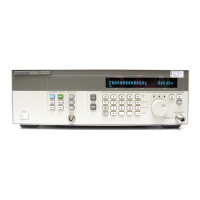
